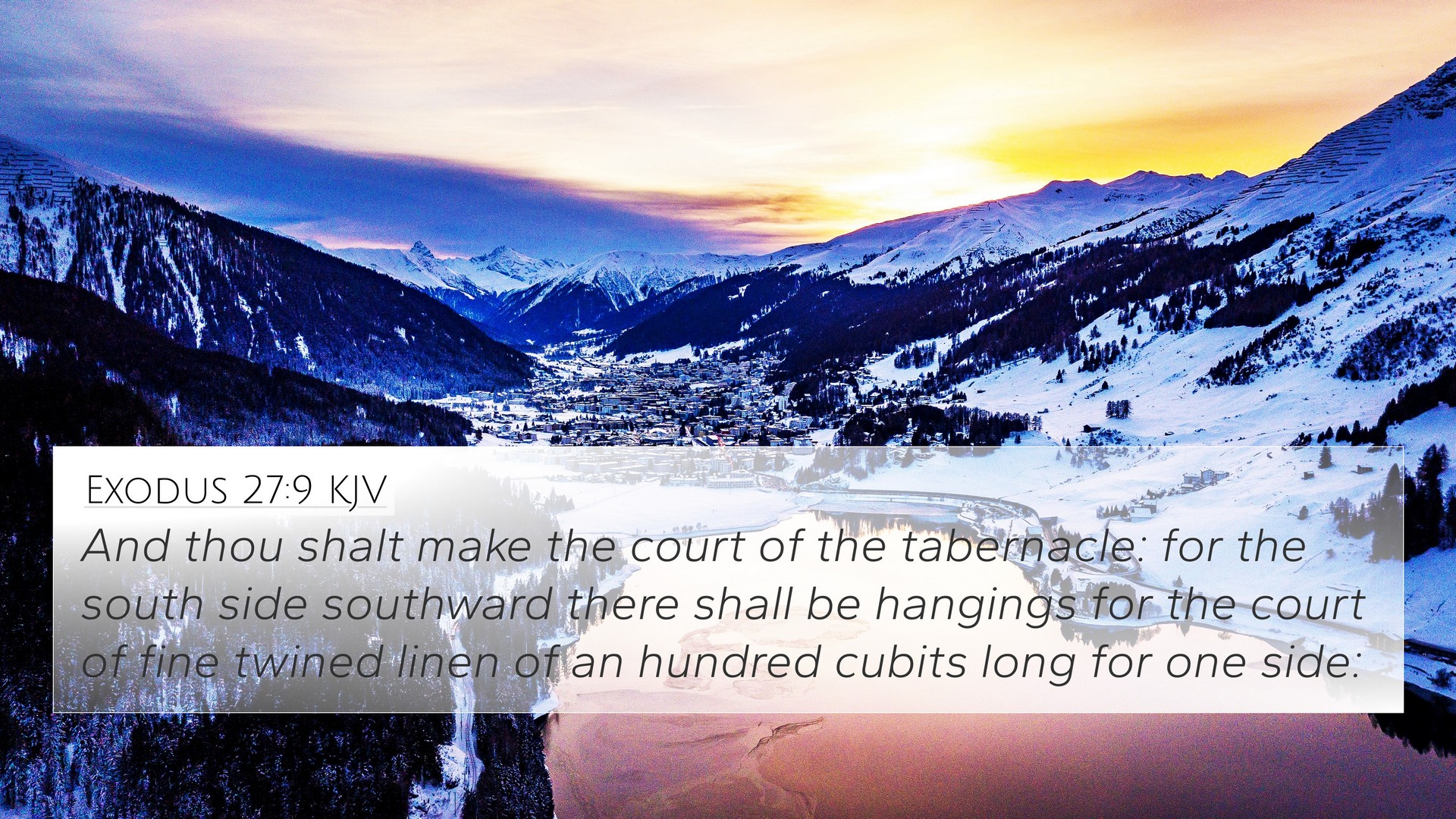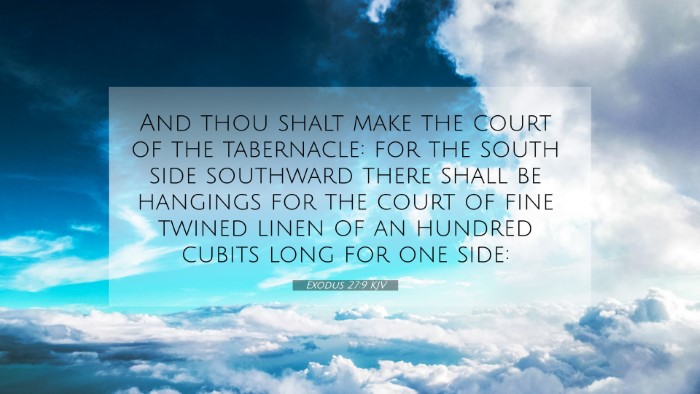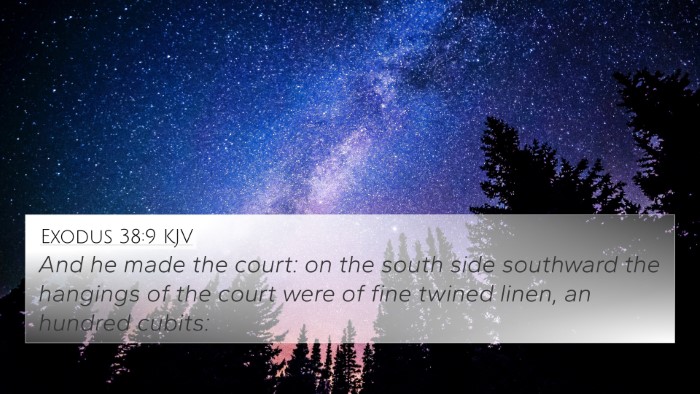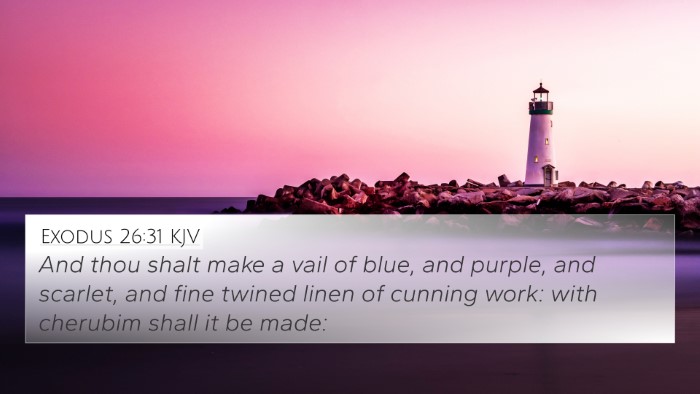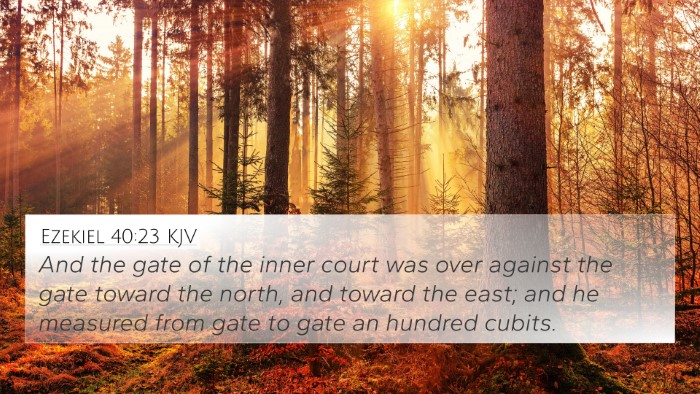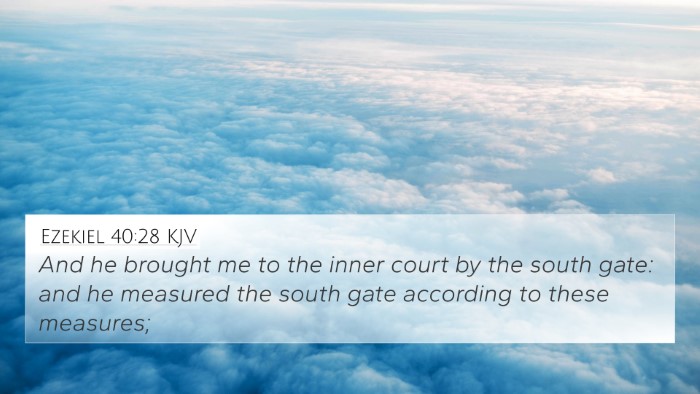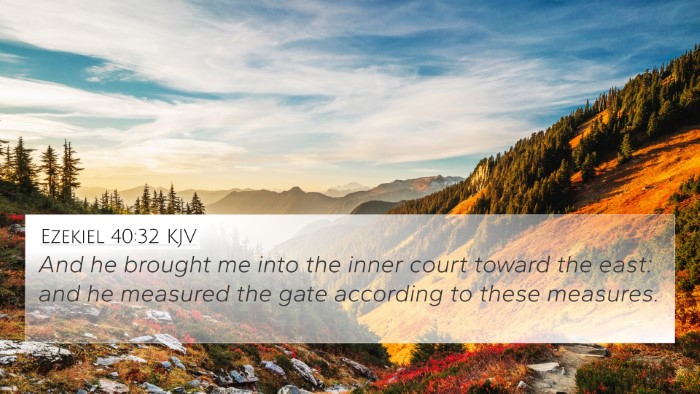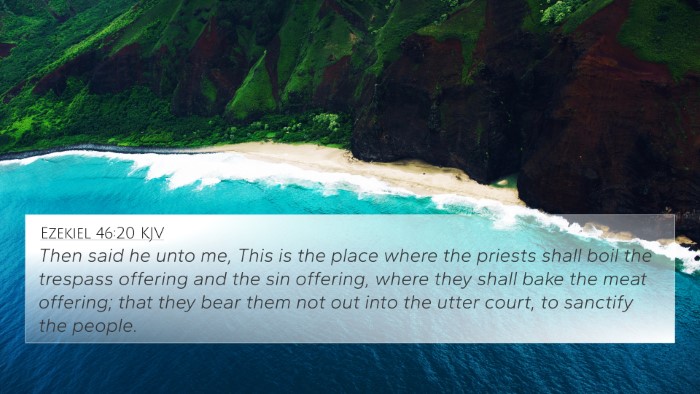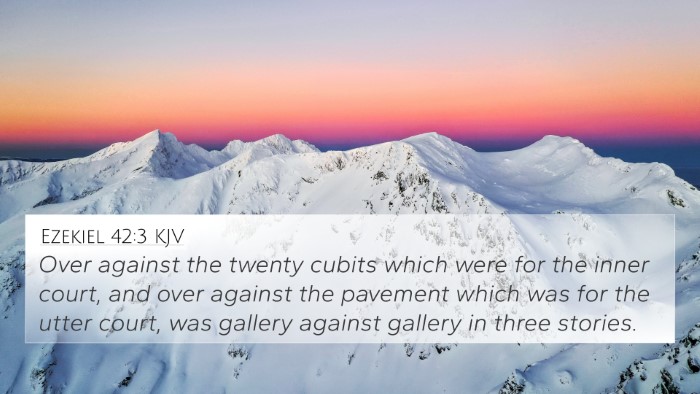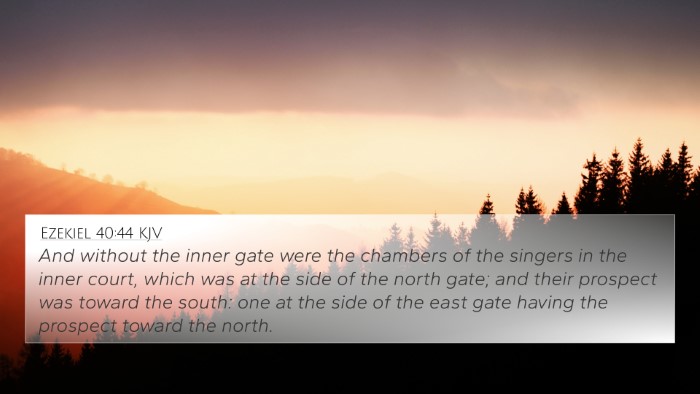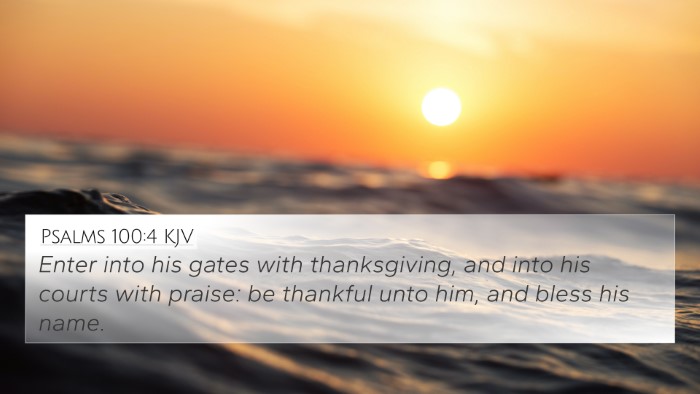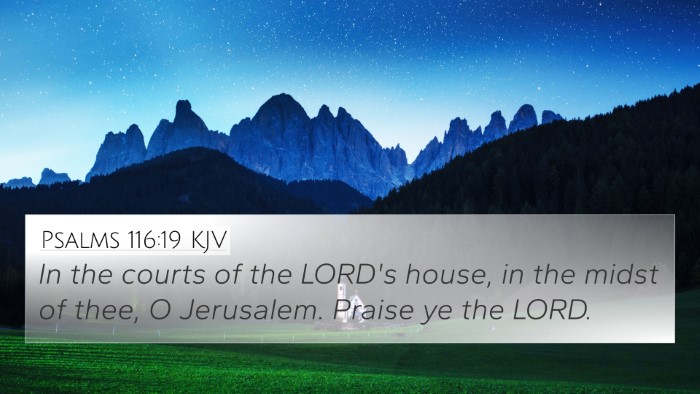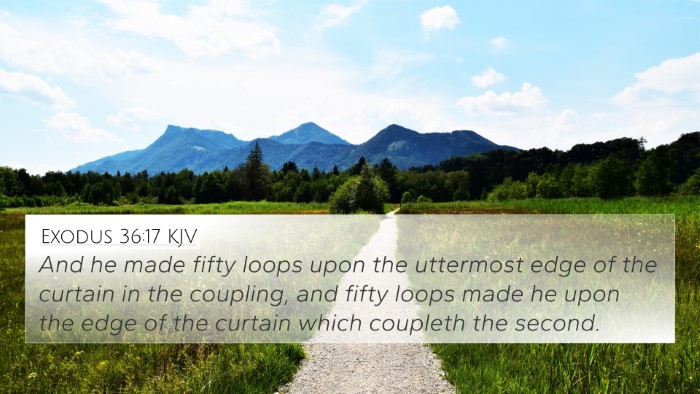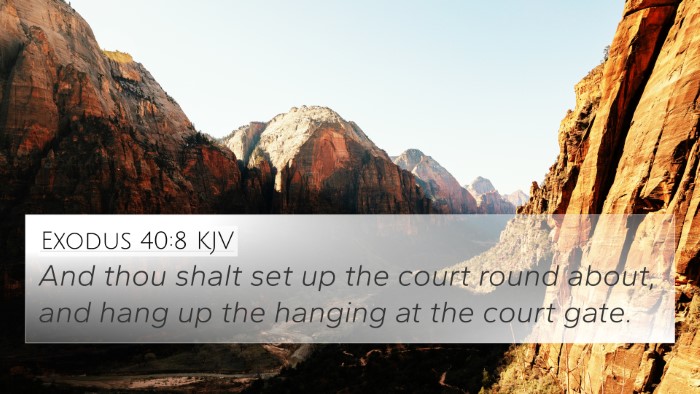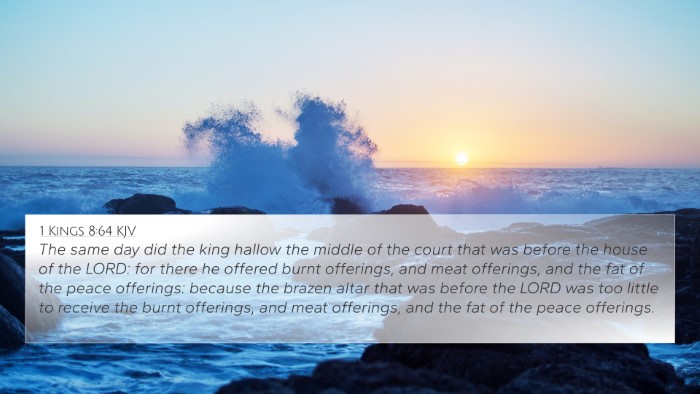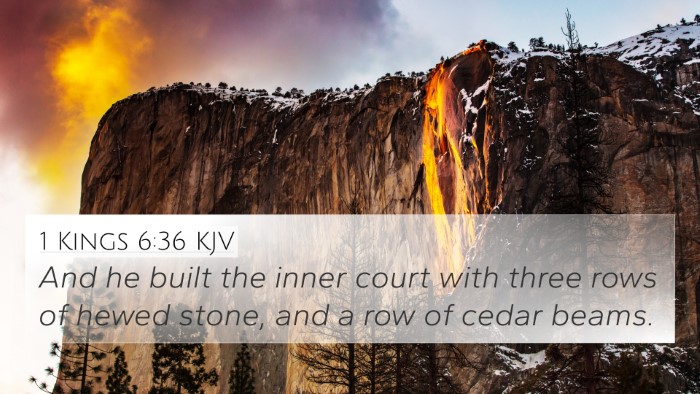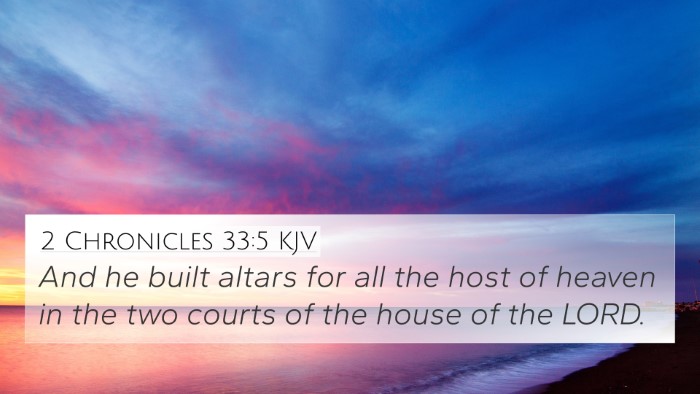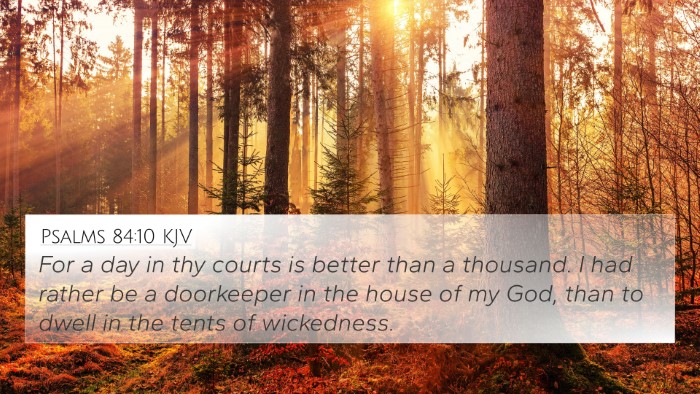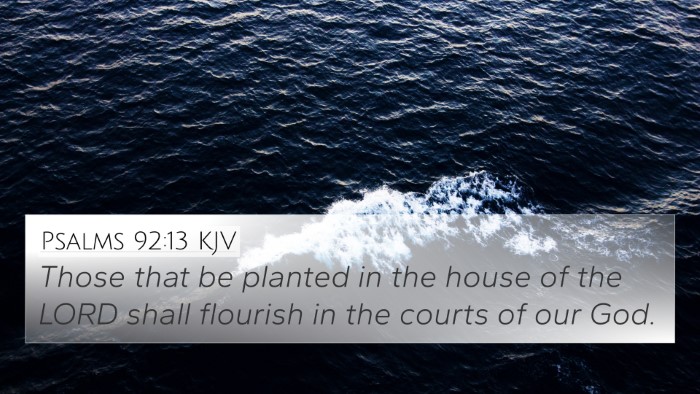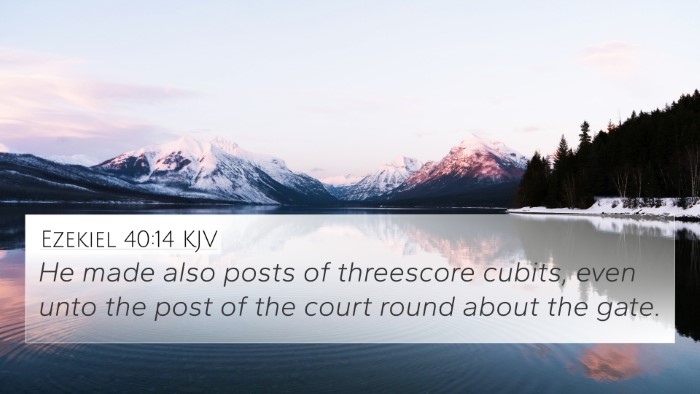Understanding Exodus 27:9
Exodus 27:9 states: "And thou shalt make the court of the tabernacle: for the south side southward there shall be hangings for the court of fine twined linen of an hundred cubits long for one side." This verse introduces the construction of the tabernacle's court, highlighting its importance in the Israelites' worship and communal life.
Summary of Biblical Insights
In examining Exodus 27:9, we see various theological and practical implications regarding the worship practices of the Israelites as commented upon by Matthew Henry, Albert Barnes, and Adam Clarke.
The Tabernacle as a Sacred Space
Matthew Henry emphasizes that the design of the tabernacle, including the court's hangings, signifies a separation between the holy and the profane. The fine twined linen used represents purity, indicating that access to God requires holiness.
Albert Barnes notes that the court's dimensions and materials were illustrative of God’s order and beauty in worship. The hangings, made of fine linen, point to both the majesty of God and the required reverence of those approaching Him.
Adam Clarke further elaborates that the careful prescription of materials and dimensions underscores the importance of following divine instructions, reinforcing the theme that God desires specific worship practices from His people.
Cross-References and Thematic Connections
- Exodus 25:8-9 - God's command for a sanctuary.
- Hebrews 9:1-5 - The description of the tabernacle and its significance in the New Testament.
- Matthew 5:14 - A city set on a hill cannot be hidden, symbolizing light and holiness akin to the tabernacle's design.
- 1 Peter 2:9 - Believers as a royal priesthood, echoing Old Testament themes of holiness.
- Revelation 21:22-23 - The heavenly city, with no temple, yet filled with God's glory.
- 2 Corinthians 6:16 - The dwelling place of God among His people.
- Numbers 3:38-39 - The Levites' responsibility in the tabernacle's upkeep and its implications for priestly duties.
Bible Verse Cross-References
This verse can be understood better through its connections with various other scriptures. Here are some notable Bible verse cross-references:
- Exodus 35:11 - Instructions for the tabernacle's construction.
- Hebrews 9:2 - The earthly tabernacle described.
- Isaiah 54:2 - Enlarging the place of one's tent, reflecting on divine provision.
- Matthew 21:12 - Jesus clearing the temple, signifying rightful worship space.
The Role of the Tabernacle
The Tabernacle served as a mobile dwelling for God among His people during their journey in the wilderness. The specifications for the court remind the Israelites of God’s holiness and their need for cleanliness and separation from sin.
Tools for Bible Cross-Referencing
To dive deeper into studies on inter-Biblical connections, employing tools for Bible cross-referencing can be invaluable. Resources such as Strong’s Concordance, Thompson Chain-Reference Bible, and electronic concordances can aid significantly.
Comparative Bible Verse Analysis
A comparative analysis of scripture aids in understanding broader Biblical themes. For instance, examining Exodus 27:9 alongside the New Testament teachings reveals how God’s desire for holiness transcends both covenants.
Thematic Bible Verse Connections
Understanding connections between Bible verses offers insights into overarching themes, such as God's presence, holiness, and the call to be set apart. These themes are critical in both the Old and New Testament contexts.
Inter-Biblical Dialogue
Engaging in inter-Biblical dialogue allows one to see how the past informs present faith. The tabernacle's significance is echoed in Christ’s ministry, where He becomes the ultimate meeting place between God and humanity.
Conclusion
In summary, Exodus 27:9 serves not just as an architectural guideline but also as a profound theological statement about God's desire to dwell among His people with holiness and order. Through various interpretations, cross-references, and thematic studies, we unlock deeper understandings of God's nature and His expectations for worship.
As seekers of Biblical truth, exploring these connections and insights encourages a more enriched faith experience, urging us to intimately understand Bible verses that relate to one another.
